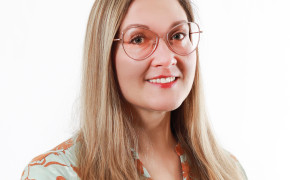Ceramics education is an established activity at Adult Education Centres. It maintains heritage skills and offers possibilities to explore new technologies.
Municipal Adult Education Centres (AEC) in Finland are well-established educational structures, with more than 120 years of history, boosting personal development, lifelong learning and social inclusion. They are open to all municipality’s residents: adults, children and the young. AECs are based on a shared funding model between municipalities and the national government, which enables access to courses at a reduced price.
AEC activities are precious in addressing two key challenges that affect the ceramic sector: lack of vocational training and risk to lose the heritage in terms of practical know-how and traditional techniques.
Alike its peers, the AEC at Lapua includes ceramics education in its offer, with practical courses of different duration (semesters / short term) and level. It provides infrastructure and equipment that are fully accessible to all students (e.g. kilns, equipment for glazing). Courses are run by local ceramic artists and former students, thus ensuring the transfer of know-how. Students are encouraged to explore new technologies. This ensures that training in traditional techniques can be coupled with technology innovation.
The low threshold to participation makes it easy for students to experiment in ceramics and offers a stepstone to vocational studies/starting own workshops. In this sense, AEC supports pupils in future career choices and enables adults reposition themselves in the labour market, passing on traditions and cultural assets.
Resources needed
Rents and investments (premises, devices, e.g. kilns), 1–2 teachers. State subvention is bound by national law and it is performance-based. It covers roughly three-fifths of costs while rest is covered by the municipality (1/5) and course fees (1/5). Other resources: pedagogic skills, legislation.
Evidence of success
The practice is well-established, as AEC-based teaching in ceramics has continued for decades. At the Lapua AEC, ceramic courses are currently increasingly popular with 20% growth in number of students from 2018-19 to 2019–20. In addition, during 2018–19, ceramic work was introduced to more than 100 pupils aged 7–12 yrs. Continuity fuels self-sufficiency of the practice, also employs local know-how (1-2 persons annually). Through increasing level of skills new ceramic entrepreneurs emerge.
Difficulties encountered
Important aspects of the practice are the updating education and lifelong learning of the teachers and peer support between the teachers. This would require attention and additional actions, resources and projects in order to be supported.
Potential for learning or transfer
The practice builds on a national framework with continuity over decades and established structures. Yet it can be applied/piloted also in different frameworks, in cooperation with relevant territorial actors and/or structures (e.g. artist studios or education centres). In addition, the format of short courses combined with subvented fees allows e.g. “crash courses” with new technologies. In general, the practice presents elements that can be replicated by other interested actors:
1. the cooperation model bridging local authorities with local communities;
2. the low-threshold access to education;
3. the key role of informal education in securing the transfer of know-how and heritage in traditional sectors and in combining this with innovative technologies.
The experience of Lapua AEC shows how informal education/training, addressing different age groups, can serve to transfer know-how and to secure the development of skills necessary for SMEs working in traditional sectors.
Tags: Citizens, Creative, Education, Entrepreneurship, Heritage








